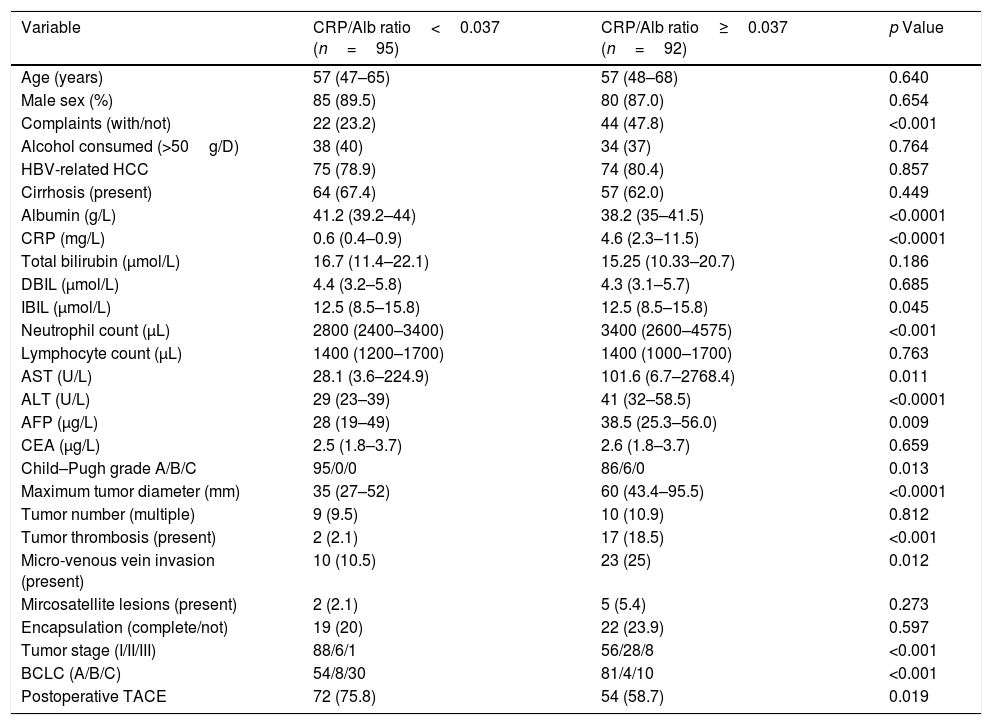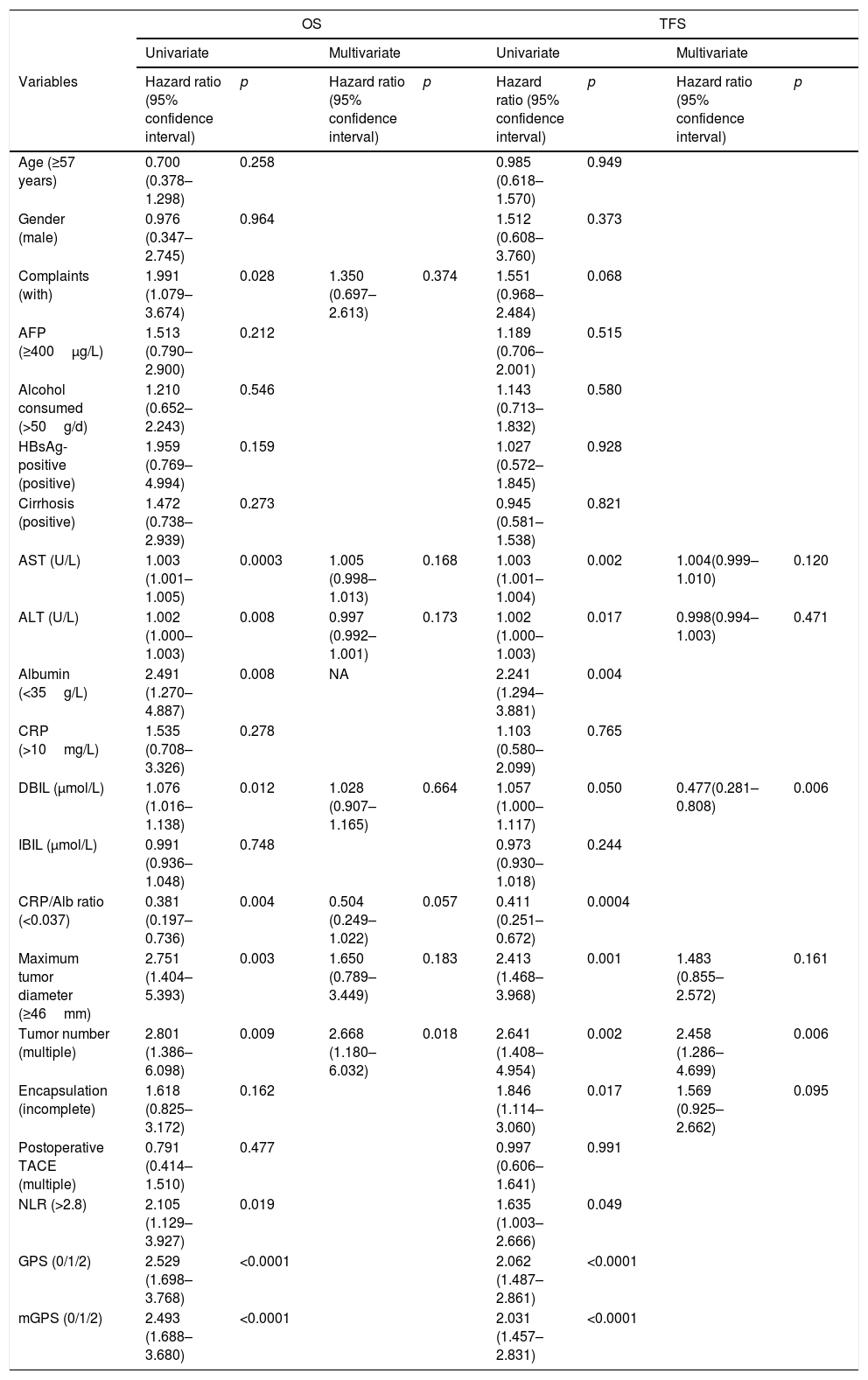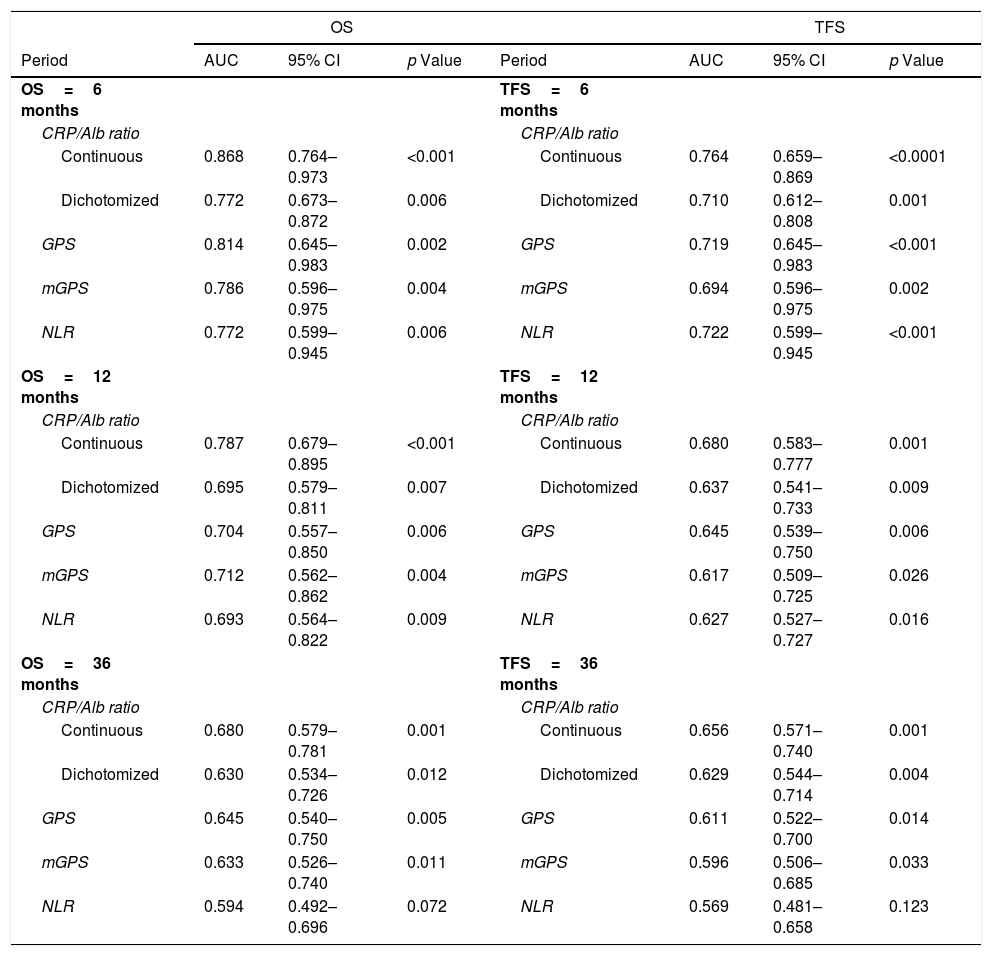Recent studies have shown that the C-reactive protein-to-albumin ratio (CAR) can predict the mortality in patients with hepatocellular carcinoma (HCC). The aim of the present study was to investigate the utility of preoperative CAR for predicting postoperative overall and tumor free survival among HCC patients after radical surgery.
MethodsPreoperative neutrophil-to-lymphocyte ratio (NLR), clinicopathological parameters, laboratory data and patient demographics of 187 patients with HCC receiving initial radical liver resection from Sir Run Run Shaw hospital were evaluated. Multivariate analyses were performed to identify clinical characteristics associated with overall survival (OS) and tumor free survival (TFS). Subsequently, the prognostic value of CAR was evaluated using the area under the curve (AUC) compared with other systemic inflammation-based prognostic scores.
ResultsMultivariate analysis revealed that the tumor number [hazard ratio (HR)=2.668; p=0.018] was independently associated with OS. While, the CRP/Alb ratio [HR=0.477; p=0.006] and the tumor number [HR=2.458; p=0.006] were significantly associated with TFS. The AUC values of the CRP/Alb ratio (6 months: 0.868; 12 months: 0.787; 36 months: 0.680) were higher than those of the GPS, mGPS and NLR at all time points in OS.
ConclusionPreoperative CRP/Alb ratio is an independent prognostic marker with tumor free survival in patients with HCC after curative resection and the prognostic ability was comparable to other applied inflammation-based prognostic scores in both overall and tumor-free survival, especially at the early stage.
Estudios recientes han demostrado que la relación proteína C reactiva/albúmina (CAR) puede predecir la mortalidad en pacientes con carcinoma hepatocelular (HCC). El objetivo del presente estudio fue investigar la utilidad de la CAR preoperatoria para predecir la supervivencia postoperatoria general y libre de tumores entre los pacientes con HCC después de la cirugía radical.
MétodosSe evaluaron la relación preoperatoria de neutrófilos a linfocitos (NLR), los parámetros clínico-patológicos, los datos de laboratorio y los datos demográficos de 187 pacientes con HCC que recibieron resección hepática radical inicial en el Hospital Sir Run Run Shaw. Se realizaron análisis multivariables para identificar las características clínicas asociadas con la supervivencia general (SG) y la supervivencia libre de tumor (SST). Posteriormente, se evaluó el valor pronóstico de la CAR utilizando el área bajo la curva (AUC) en comparación con otras puntuaciones de pronóstico basadas en la inflamación sistémica.
ResultadosEl análisis multivariado reveló que el número de tumores (cociente de riesgos instantáneos [CRI]: 2,668; p=0,018) se asoció de manera independiente con la SG. Mientras, la relación CRP/Alb (hazard ratio [HR]: 0,477; p=0,006) y el número de tumores (HR: 2,458; p=0,006) se asociaron significativamente con SST. Los valores de AUC de la relación CRP/Alb (6 meses: 0,868; 12 meses: 0,787 y 36 meses: 0,680) fueron superiores a los del GPS, mGPS y NLR en todos los puntos temporales en SG.
ConclusiónLa proporción preoperatoria de CRP/Alb no solo puede predecir la supervivencia general en pacientes con HCC después de la resección curativa, sino que también tiene un rendimiento favorable en la predicción de recidiva tumoral, especialmente en las primeras etapas.
Artículo
Comprando el artículo el PDF del mismo podrá ser descargado
Precio 19,34 €
Comprar ahora












